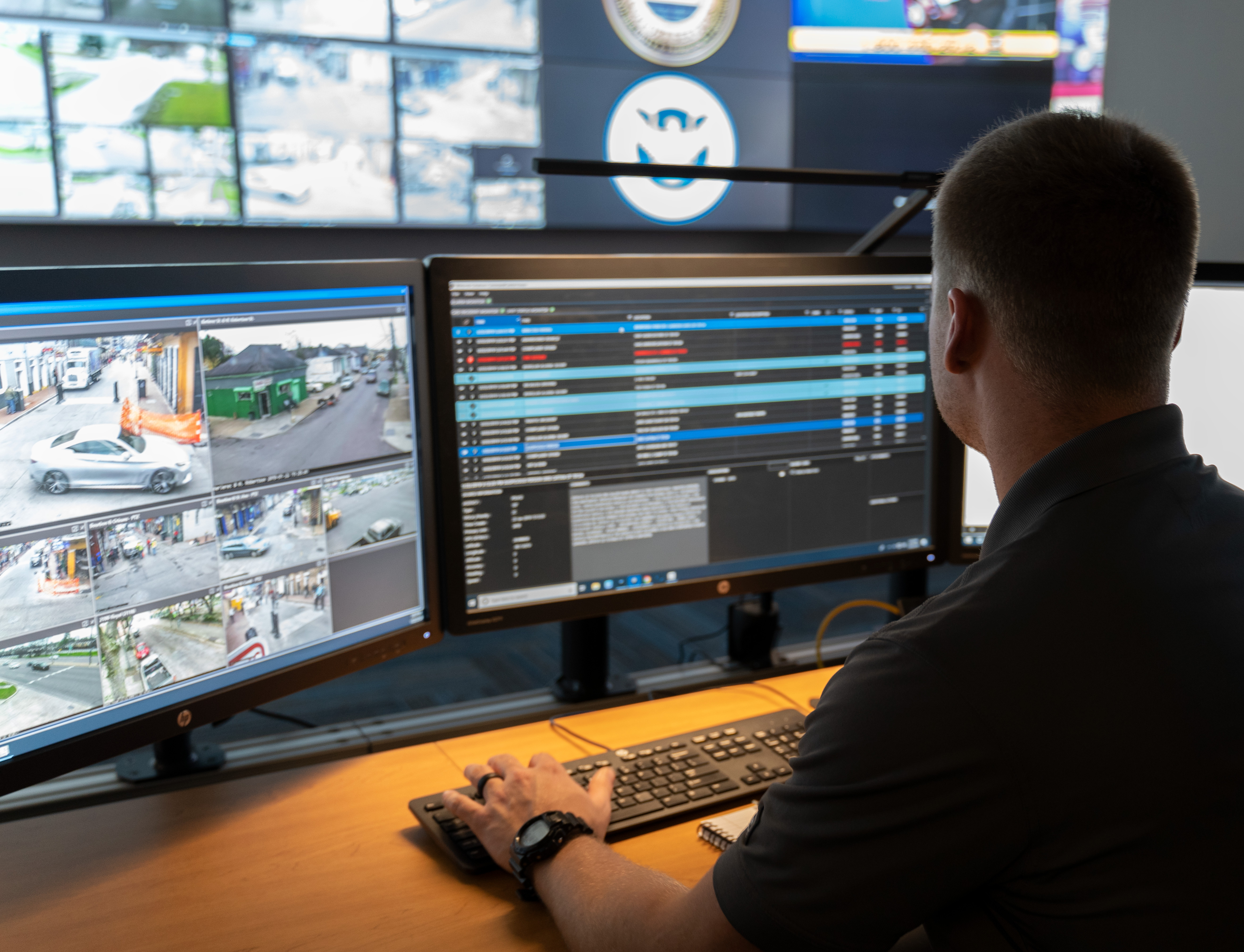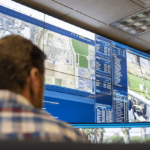Having conducted a unique, global research study on the future for the public safety and enterprise sectors, with Goldsmiths University of London, Motorola Solutions shared more on what it all means for the Asia Pacific region in March, 2022.
At a round table event titled The Future for Public Safety and Enterprise Security in Asia Pacific, the company went deeper into the survey findings from 1,000 citizens each across Singapore, Taiwan, Australia and Malaysia and provided its future technology forecasts.
One central idea underpins the Consensus for Change study – that the global pandemic has cast the role of technology for providing safety in a new light – even those technologies that may once have been thought of as unpopular or even invasive.
The Asia Pacific markets form a subset of data captured from the broader Consensus for Change global study conducted in 2021 that surveyed 12,000 citizens and interviewed 50 public safety agencies, commercial organisations and industry experts across 10 geographic markets worldwide (namely Australia, Germany, Italy, Malaysia, the Nordics, Singapore, Spain, Taiwan, United Kingdom and the United States.)
One central idea underpins the Consensus for Change study – that the global pandemic has cast the role of technology for providing safety in a new light – even those technologies that may once have been thought of as unpopular or even invasive.
The global study found that 71% of citizens want advanced technologies such as video cameras, data analytics, cybersecurity and the cloud to address challenges of the modern world; that 70% want emergency services to be able to predict risk; and 75% were willing to trust organisations which hold their information, but only if they use it appropriately. The Goldsmiths study also identified the rail sector as a prominent example of a safety exposed sector that needs both advanced technology and public consensus for its use.
“Besides police, fire, ambulance and other emergency services, one of the core markets that has always turned to technology to maintain safety and efficiency is metro rail,” said Steve Crutchfield, Motorola Solutions, Vice-President, Asia Pacific.
“We have seen that throughout the Asia Pacific region, especially through the application of video technology for the Philippines National Railway to better manage safety throughout the COVID-19 pandemic. Rail operators use a combination of technology including mission critical voice communication to keep their services running. Taiwan high-speed rail, Malaysia’s Mass Rapid Transit (MRT) system, the Delhi Metro in India and the Singapore’s SMRT Corporation Limited are among them,”
Established in 1892, the 78km Philippines National Railway (PNR) network serves an average of 60,000 passengers per day, with 17 stations and 15 train crossings from Caloocan on Manila Bay to Legaspi on the Albay Gulf. The network uses 219 7K ultra high-definition (UHD) Avigilon video cameras running advanced, artificial-intelligence (AI) powered video analytics. These are installed at strategic locations within the stations and railway crossings – all linked to a command and control centre operating 24 by 7.
According to its Assistant General Manager, Atty. Celeste D. Lauta, the original purpose of PNR’s security and monitoring system was to identify incidents including traffic collisions with boom gates at railway crossings. When COVID-19 struck, PNR decided to use the same system to keep passengers and staff safe from the potential transmission of COVID-19.
Previously, PNR staff manually read passengers’ body temperature using hand-held, infra-red thermometers, which was labour-intensive, time consuming and basically unsuitable for screening its daily passenger volume.
By using UHD cameras at its stations, the command and control centre easily detects persons with elevated temperature within their view, whilst minimising interaction between passengers and PNR staff.
The system stores recorded data for three months and the facial recognition search capability enables it to identify persons potentially exposed to COVID-19 at every location, and those people around them – greatly helping wider national contact tracing efforts.
It also identifies passengers who are not wearing face masks, counts the number of persons inside carriages to ensure physical distancing and triggers an alarm if the occupation of an area is exceeded.
Its remote license-plate recognition capability also enables PNR to identity violations by motor vehicles at the railway crossings.
SMRT ‘s smarter journey with voice communications
Having commenced operation on 7 October 1987, Singapore’s metro rail system is the oldest, busiest and most extensive in South East Asia, with a total of six lines spanning a total of 200km with 130 stations and a daily ridership of three million, according to Singapore’s Land Transport Authority.
The island-wide mass rapid transit (MRT) rail network is supplemented by light rail transit (LRT) feeder lines branching out from its Bukit Panjang, Sengkang and Punggol MRT stations to serve their respective surrounding neighbourhoods. The LRT sub-network spans a total of 28 km with 40 stations and serves 200,000 passengers daily.
SMRT operates the North-South, East-West, Circle and Thomson-East Coast MRT lines, as well as the Bukit Panjang LRT, whilst SBS operates the North-East and Downtown MRT lines, as well as the Sengkang and Punggol LRT.
“Our mission is to build a public transit service which is safe, reliable and convenient for the public, so adopting technology has always been valuable to us,” said Wee Lee Leow, SMRT Head of Signal and Communications and Cyber Security.

In its early days, SMRT used a conventional radio system to speak to its train drivers, identified by their call signs. This required staff to strictly speak in turn but it became problematic when staff spoke at the same time, resulting in miscommunication.
About 20 years ago, SMRT adopted a digital, trunked mobile radio system based upon the TETRA (Terrestrial Trunked Radio) standard on its North-South and East-West lines – the first mission critical TETRA system for any rail network throughout Asia. This helped to improve the clarity of SMRT command and control communications by allowing staff in the operations command centre (OCC) to speak instantly and directly to specific drivers.
SMRT also placed emergency buttons on the trains, where passengers could push to speak to the driver whenever help is needed. Now with its TETRA system, passengers can speak directly to the Operations Command Centre (OCC) where they can get professionally qualified help to resolve problems – an important enhancement to passenger safety.
This ability for passengers to speak directly to the OCC will become especially important on driverless trains, such as the LRTs and as Singapore’s MRT pursues its future vision for driverless trains.
“This is a very good example of rail operators adopting mission critical technology to resolve operational issues, enhance customer service and improve public safety,” said Wee Lee.
A Foundation for giving back to communities
In line with its public safety solutions for emergency management and disaster response, Motorola Solutions’ charitable arm, The Motorola Solutions Foundation, provides aid to victims of humanitarian crises, to first responders, their families as well as training and development for women. It donated US$12 million to 1,000 charities worldwide in 2021, including close to US$500,000 in the Asia Pacific.
“In Singapore, we support key events such as Yellow Ribbon Prison Run and organisations such as the National Crime Prevention Council (NCPC),” said Kar Weng Chang, Motorola Solutions Singapore Country Manager.
The Prison Run raises funds for rehabilitation of current and former prison inmates and their families, whilst the NCPC promotes public awareness about crime and self-help in crime prevention.

The Foundation also donates food to homes for the disadvantaged, and Motorola Solutions’ employees also celebrated International Women’s Day (8th March) in solidarity with women against the biases they still face.
A key message from the roundtable is that the COVID-19 pandemic has accelerated technology development and deployment which are proving to be useful not only today, but well into the future. With its global research also highlighting the plight of public safety organisations, first responders and broader societal needs, Motorola Solutions and its Foundation also hope to direct more funding and support to improve community safety and prosperity for the future.








